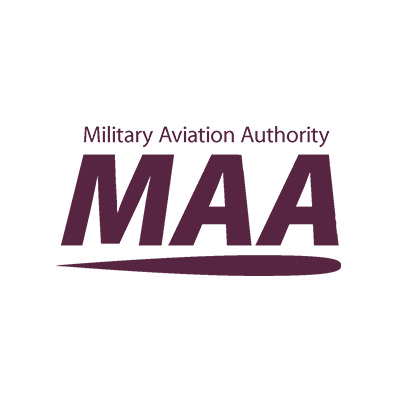A decade after the disappearance of MH370 what has changed in aviation safety?
The mysterious disappearance of Malaysia Airlines Flight MH370 on March 8, 2014, marked a somber moment in aviation history.
The mysterious disappearance of Malaysia Airlines Flight MH370 on March 8, 2014, marked a somber moment in aviation history. The Boeing 777 vanished while en-route from Kuala Lumpur to Beijing with 239 passengers and crew on board, sparking an international search that spanned years and covered vast expanses of ocean. The incident exposed significant gaps in global aviation safety, particularly in aircraft tracking and emergency response capabilities. In the decade since, the aviation community has rallied to implement comprehensive measures aimed at ensuring such a tragedy never recurs. This article explores the multifaceted approach taken to enhance safety and prevent future disappearances.
The Genesis of GADSS
In response to MH370, the International Civil Aviation Organization (ICAO) spearheaded the development of the Global Aeronautical Distress and Safety System (GADSS). GADSS is a set of standards and recommended practices designed to improve global flight tracking and ensure the timely location of aircraft in distress. Central to GADSS are two key concepts: Autonomous Distress Tracking (ADT) and enhanced location reporting. ADT requires aircraft to automatically transmit their location at least once every minute if in distress, while under normal conditions, the minimum reporting frequency is every 15 minutes. This initiative represents a significant leap forward in the proactive monitoring of aircraft, aiming to eliminate the possibility of an airliner disappearing without a trace.
Advancements in Tracking Technology
The push for better tracking technology has led to the adoption of satellite-based Automatic Dependent Surveillance-Broadcast (ADS-B) systems, which provide global coverage, including over oceans and remote areas. Unlike traditional radar, which has limited range and coverage, satellite-based ADS-B ensures that aircraft are continuously monitored, regardless of their location. This technology not only aids in tracking but also enhances the efficiency of flight routes and air traffic management.
Deployable flight recorders have emerged as another critical innovation. In contrast to fixed black boxes, these devices can be ejected from an aircraft in distress, enabling them to float on water and transmit vital location and flight data. This capability significantly improves the chances of rapid recovery and investigation following an incident.
Strengthening Communication Systems
A key lesson from MH370 was the need for robust, uninterrupted communication between aircraft and ground control. Enhancements in satellite communication infrastructure now ensure that aircraft remain in constant contact with ground stations, facilitating real-time communication and monitoring. These systems provide a fail-safe mechanism to alert authorities to irregularities or emergencies, allowing for immediate response and coordination.
International Collaboration and Data Sharing
One of the most challenging aspects of the MH370 search was coordinating the international effort and sharing critical data across borders. In the years following, there has been a concerted effort to improve collaboration among aviation authorities, airlines, and search and rescue organizations worldwide. Mechanisms for sharing radar data, satellite imagery, and other intelligence have been streamlined, fostering a more unified approach to addressing aviation emergencies. This global network is crucial for the rapid dissemination of information and coordination of search and rescue operations.
Regulatory Changes and Compliance
Regulatory bodies, including ICAO, the European Union Aviation Safety Agency (EASA), and the Federal Aviation Administration (FAA) in the United States, have revised their mandates to reflect the lessons learned from MH370. These changes encompass stricter requirements for flight tracking, communication, and emergency response protocols. Airlines are now obliged to adhere to these enhanced standards, with regular audits and checks to ensure compliance. These regulatory shifts signify a global commitment to raising the bar for aviation safety.
Challenges and Future Directions
Despite the significant strides made, the quest to improve aviation safety continues. The cost and logistical challenges of implementing cutting-edge technologies, particularly for smaller carriers and in developing nations, remain a hurdle. Moreover, the dynamic nature of aviation technology and the ever-evolving threat landscape necessitate ongoing vigilance and adaptation.
Looking ahead, the focus is on leveraging advancements in artificial intelligence (AI) and machine learning to further enhance tracking and monitoring systems. These technologies promise to revolutionize the way aircraft and potential safety threats are identified and managed. Additionally, the drive towards global standardization of safety protocols and technologies aims to create a seamless and universally safe aviation environment.
Conclusion
The disappearance of MH370 was a watershed moment that galvanized the aviation industry into action. The subsequent decade has witnessed profound changes aimed at ensuring the safety and security of air travel. Through technological innovation, regulatory reform, and international cooperation, significant progress has been made in minimizing the risks of aircraft disappearing without a trace.
Yet, the legacy of MH370 is a stark reminder of the need for relentless pursuit of safety excellence. It underscores the importance of learning from past tragedies to build a safer future for aviation. As we reflect on the advancements of the past ten years, the commitment of the global aviation community to preventing another MH370 stands as a testament to the resilience and dedication to safeguarding lives in the skies.
ATL Europe provide a range of aircraft modifications for ADS-B and Underwater Locating Devices. Please use the form below if you would like to learn more.
Ready to start a conversation?
Building 307,
Aviation Park West,
Bournemouth Airport,
Dorset,
BH23 6NW
ATL Europe,
3 rue Franche Comté,
Pépinière d’Entreprises BP311,
50103 Cherbourg en Cotentin,
France

